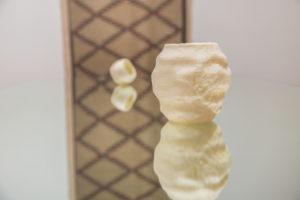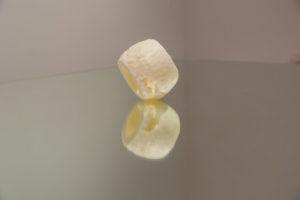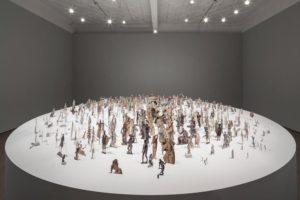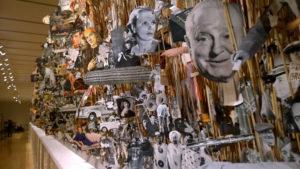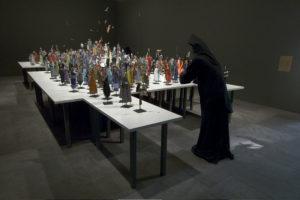Two Canadian Artists Receive the First Think2Thing Be3Dimensional 3D Printing Innovation Grants in the Arts
 Artists have been flocking to 3D printing as a medium since 3D printing was first introduced to the general public, and it is pretty easy to see why. 3D printing offers artists a way to make the impossible real in ways that many traditional mediums are simply incapable of achieving. There are those who claim that 3D printed art isn’t “real” art of course, but that sort of art snobbery is nothing new and 3D printing is hardly the first high tech tool to be subjected to it. The idea that 3D printed art is too easy would almost be funny if it wasn’t insulting to the countless digital artists and sculptors who have put just as much time and effort into mastering their tools as a traditional painter or sculptor has.
Artists have been flocking to 3D printing as a medium since 3D printing was first introduced to the general public, and it is pretty easy to see why. 3D printing offers artists a way to make the impossible real in ways that many traditional mediums are simply incapable of achieving. There are those who claim that 3D printed art isn’t “real” art of course, but that sort of art snobbery is nothing new and 3D printing is hardly the first high tech tool to be subjected to it. The idea that 3D printed art is too easy would almost be funny if it wasn’t insulting to the countless digital artists and sculptors who have put just as much time and effort into mastering their tools as a traditional painter or sculptor has.
While there will always be critics who ignore or dismiss artwork made with CAD software and 3D printers, there are plenty of museums and art galleries that are embracing 3D printed art. This week, a pair of Canadian artists took home the first grants from the Be3Dimensional Innovation Fund, and they were awarded in a category devoted entirely to art created using 3D technology. The winners were Vancouver-based artist Geoffrey Farmer and Northern Ontario’s Duane Linklater, an Omaskêko Cree from Moose Cree First Nation. They were selected by The National Gallery of Canada and Ryerson Image Centre as Canada’s best-in-class for creating innovative and exciting art using cutting-edge 3D technology. The pair will each draw from a $100,000 fund that was set aside to fund their efforts to create original works of art for this project.
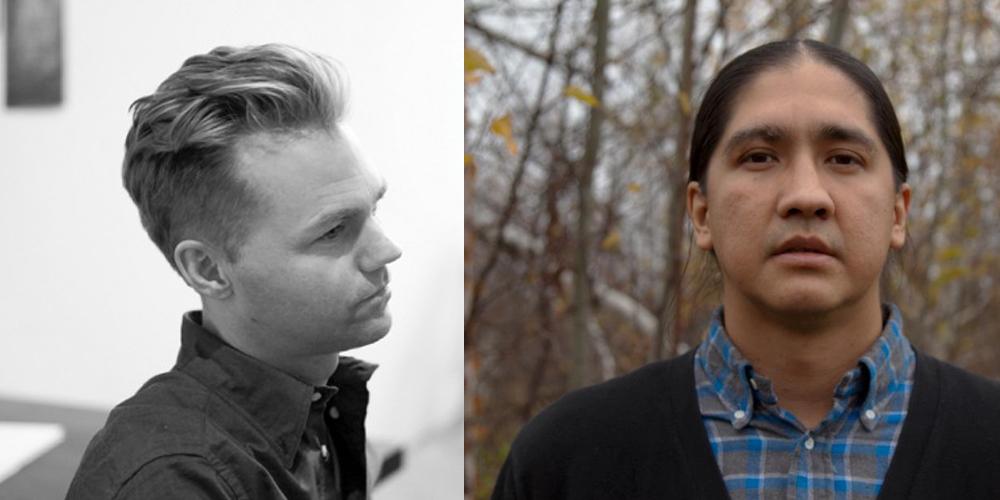
Winning artists Geoffrey Farmer on the left [Image: Canadian Art] and Duane Linklater on the right [Image: Tanya Lukin Linklater]
“I was interested in unauthored art objects, more specifically, those objects that don’t have an attributed artist to their name. I thought that this is an interesting problem to work with. For me, it’s reflected what happens with native American objects when they enter into predominately European modern and contemporary museums — that they often lose information when they’ve been acquired. I was looking for a particular way of making these objects, copying these objects as part of creating an analogous object to speak to that loss. As a result, the final sculptures that were presented, of course, are representative of all of this lost information, missed translations. For me, that was a really important project to do,” Linklater told CBC News.
Farmer has been a popular installation artist for over twenty years and had his art featured in many world famous museums and galleries, including the Louvre in Paris, the Tate Modern in London and the National Gallery of Canada. He is also gearing up to represent Canada at the 57th International Art Exhibition in Venice Italy, where his work is expected to be created using 3D technology. His body of work is expansive, and he is most known for his massive sculptural installations that feel like three dimensional collages. Part of how he creates art is by never finishing it, and his installations are constantly being revisited and altered by him over extended periods of time. 3D printing is a natural extension of how Farmer has always made his work; he will simply be reproducing images and objects using 3D printers rather than photography, paper and foam.
“As an artist, I’m still trying to understand what it means, and I think it will take us time to understand how it’s going to change our world. But we definitely know it’s changing it. We’ve always been making reproductions of things in the world, so these things aren’t necessarily new. But in the way the technology is able to do it now is different. I’m able to go out into the world and if I see something, I can scan it and bring it back into the studio and work with it within the studio,” says Farmer.
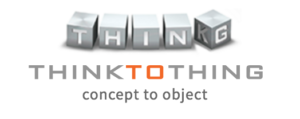 The Be3Dimensional Innovation Fund was launched in October 2015 by Ryerson University and Toronto-based Think2Thing, a 3D printing studio co-founded by renowned photographer Edward Burtynsky. The fund was set up to encourage and financially support Canadian innovators who are pushing the boundaries of how 3D printing, 3D scanning and 3D modelling technologies can be used to produce art, fashion and design. Discuss further in the Be3Dimensional Innovation Fund forum over at 3DPB.com.
The Be3Dimensional Innovation Fund was launched in October 2015 by Ryerson University and Toronto-based Think2Thing, a 3D printing studio co-founded by renowned photographer Edward Burtynsky. The fund was set up to encourage and financially support Canadian innovators who are pushing the boundaries of how 3D printing, 3D scanning and 3D modelling technologies can be used to produce art, fashion and design. Discuss further in the Be3Dimensional Innovation Fund forum over at 3DPB.com.
Subscribe to Our Email Newsletter
Stay up-to-date on all the latest news from the 3D printing industry and receive information and offers from third party vendors.
You May Also Like
Further Understanding of 3D Printing Design at ADDITIV Design World
ADDITIV is back once again! This time, the virtual platform for additive manufacturing will be holding the first-ever edition of ADDITIV Design World on May 23rd from 9:00 AM –...
3D Printer Maker EVO-tech Reborn as NEVO3D — Once More With Feeling
EVO-tech was a 3D printing service and original equipment manufacturer established in 2013 and based in Schörfling am Attersee, Austria. The company produced high-quality material extrusion systems featuring linear bearings,...
3D Systems Brings 3D Printed PEEK Cranial Implant to the U.S. with FDA Clearance
For more than 10 years, 3D Systems (NYSE:DDD) has worked hand-in-hand with surgeons to plan over 150,000 patient-specific cases, and develop more than two million instruments and implants from its...
CDFAM Returns to Berlin for Second Annual Symposium
The second CDFAM Computational Design Symposium is scheduled for May 7-8, 2024, in Berlin, and will convene leading experts in computational design across all scales. Building upon the first event...


